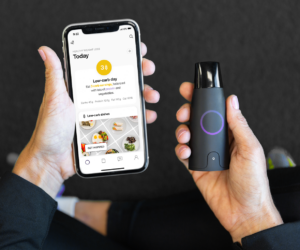While few employers provide retiree health benefits, the ones that do are using Medicare Advantage plans more and more, a new analysis found.
Currently, only 13% of large employers — or companies with 200 or more employees — offer retiree health benefits, the Kaiser Family Foundation (KFF) report showed. Of this group, 50% provide these benefits through a Medicare Advantage plan, up from 26% in 2017.
For firms with 5,000 or more workers providing retiree benefits, 60% use Medicare Advantage plans, up from 29% in 2017.
Additionally, of the large firms providing retiree benefits with a Medicare Advantage plan, 44% don’t offer any other choice for coverage, the survey discovered.
The KFF report relied on data from the 2022 KFF Employer Health Benefits Survey. KFF worked with NORC at the University of Chicago and Davis Research to conduct the survey, which included interviews with business owners and human resource and benefits managers at 2,188 firms.
A major reason for firms turning to Medicare Advantage plans for retirees is financial. About 27% of all large firms chose these plans due to cost; 20% of firms with 200 to 999 workers and 42% of firms with 1,000 or more workers selected cost as the top factor driving their decisions. Other reasons cited for choosing MA plans were their administrative simplicity, better coverage options and flexibility for enrollees.
This shift could have several effects on retirees, KFF said.
“As the share of large employers offering retiree health benefits to Medicare-eligible retirees continues to decline, firms that still offer these benefits are increasingly turning to Medicare Advantage, often to lower their own financial liability, which raises questions about the implications for retirees, employers and the Medicare program,” KFF stated in the report. “For some large employers, the shift to Medicare Advantage appears to be a strategy to maintain benefits for their retirees, without terminating coverage or adopting other changes that more directly shift costs onto retirees.”
One of these implications is the impact this approach could have on retirees’ access to physicians and hospitals, the report said. They’ll also have to go through prior authorization, which could limit their access to some services. If they’re not happy with their network, they would have to completely give up their retiree benefits, KFF said.
Another implication is the impact on Medicare spending, as Medicare pays more for enrollees in Medicare Advantage plans than traditional Medicare, according to KFF.
The report comes as Medicare Advantage enrollment in general is becoming more popular. A separate KFF report found that about 48% of Medicare beneficiaries are enrolled in Medicare Advantage plans. This number could cross the 50% threshold as soon as next year.
At the same time, there is a growing desire to scrutinize MA plans given that some believe they are misleading for seniors and actually drive up costs for the Centers for Medicare and Medicaid Services. CMS recently released a requirement — effective January 1 — that bans MA plans from advertising on television without approval from the agency.
Photo: designer491, Getty Images
I don’t think anyone can really be prepared for their first time using a virtual reality headset. Technology has become such a familiarized part of our lives that I think its brilliance can sometimes be lost on us, but virtual reality has given people a taste of something they’ve never experienced before. Virtual reality isn’t a technology that simply complements our lives, it’s a technology that brings our lives into an entirely new reality.
It’s no wonder that virtual reality’s impact has been far-reaching. You can be transported to any corner of the world and feel like you’re really there. You can purchase movie tickets and watch a film in a VR cinema with your friends. And of course, you can play a huge variety of video games that make you feel like you’re part of the action.
So, what does this have to do with healthcare? While virtual reality applications don’t seem like they’d have much use in the healthcare industry, VR has proven to be a valuable tool in treatment and care. Medical teams have used virtual reality to plan out and practice complex surgeries, like a neurosurgical procedure, ahead of time. It’s been used as a pain management tactic to distract patients from scary or painful procedures, especially in instances where sedation and anesthesia can’t be given. It’s also helped professionals working in addiction recovery be more creative in the strategies and techniques they use to help their patients overcome their addictions. But another remarkable way virtual reality is applied in the healthcare industry is as a training tool.
Thanks to VR, facilities are able to create simulations for a number of different scenarios that employees can experience from a first-person perspective. Here’s how this is revolutionizing healthcare training.
A deeply immersive and interactive education
Medical professionals know that healthcare is a high-stakes industry, so they’re thankful for all the stages of training they go through to adequately prepare themselves for their future roles. Extensive classroom training, training in the field, and being mentored by seasoned medical professionals is all significant, but being on your own for the first time can be intimidating.
Virtual reality gives new doctors, nurses, and medical staff the ability to immerse themselves in real-life scenarios as if they were in charge. They can see the immediate consequences of their actions and can learn from their correct or incorrect behaviors. They can be exposed to dangerous or life-threatening situations and practice resolving each scenario without putting themselves or their patients in any real danger.
Facilities are always researching and developing new ways to enhance their training processes, and what better way to do that than to have new staff members immerse themselves in situations they could experience while on the job? This is how facilities can enforce self-awareness in their employees while creating more confident, capable teams. Studies have shown that experiential learning also drives higher compassion for patients as well. This is much harder to accomplish with more traditional training methods where employees can’t get regular, hands-on practice.
Virtual reality-based training has been proven to improve performance across the healthcare industry while reducing the possibility of fatal errors. Nothing prepares someone for the real thing more effectively than a program built to replicate real-world experiences.
New or updated equipment training
In order to continue providing the best care to patients, medical equipment must constantly be updated or replaced with new devices. With any new feature, there’s always a learning curve — except in healthcare, these learning curves can have dire consequences.
Training new employees on new or updated equipment can be extremely time-consuming, and facilitating times to introduce staff members to the equipment can be a headache. Virtual reality not only makes equipment training faster and more accessible, it also gives everyone an opportunity to practice using the equipment, tools, and technology as much as they need to in order to feel more comfortable before using it for the first time.
Higher staff retention
Since the beginning of the pandemic, the healthcare industry has seen an increase in staff turnover across hospitals, skilled nursing facilities, and other medical offices. As executives find ways to entice their employees to stay, it seems like some of the common incentives, like higher pay and bonuses, are no longer good enough to combat record levels of burnout and fatigue.
In addition to their wellbeing, doctors, nurses, and other medical staff are also choosing to leave their jobs due to a lack of personal growth and poor self-confidence — both of which put patients at a greater risk of danger. Facilities must invest in the ongoing education and training of their teams, which will help staff members develop greater confidence and competence. Virtual reality exceeds the traditional training methods facilities often use, and this new immersive, experiential way to train staff members is critical for their proficiency and satisfaction. VR simulators have been shown to boost procedural confidence and develop technical on-the-job skills. Investing in your employees means investing in advanced technology that will allow them to perform better in their roles.
Virtual reality helps to build confident, collaborative teams that then create a positive workplace environment for other staff members and patients alike. Using tools like virtual reality to train the current and next generations of healthcare workers is another way executives can commit to enhancing the industry as a whole.
Photo: Moyo Studio, Getty Images
Value-based care has been viewed primarily as a cost-center to the hospital budget that requires upfront investment in the infrastructure without a guarantee for shared savings down the road. A risky bet.
And if you’re doing value-based care right, with greater focus and attention paid to preventive care services, it could result in decreased use of hospitals for acute care needs. Downright threatening to the very existence of a hospital system that is reliant on volume.
For these very reasons, hospital executives might shy away from value-based care.
And yet transition to value-based care is necessary and inevitable. If not out of concern for the out of control spend on healthcare, it is a necessary response and adaptation to the formidable market forces.
Consider these example shifts –
More than 50% of the hospitals saw negative hospital contribution margins this year with continued lower utilization of hospital services post-pandemic.
Greater than 50% of Medicare members are projected to enroll in MA plans in 2023. These health plans will need to hit their medical loss ratio (MLR) if they are to be successful. What that translates to, is a need to control costs and therefore a greater number of VBC arrangements that will be offered in the markets. A hospital that knows how to play in VBC will see an increase in the number of members they serve. And those that don’t will miss out.
Add to that, the relentless market disruption and competition from non-traditional health care entrants (Amazon, Walmart) and the continued market consolidation.
With CMS’s bold aim to transition 100% of its traditional Medicare payments to VBC payments by 2030, it will only serve to accelerate the forward momentum adopted by private payers
Collectively, what these signal is that ‘status quo’ is a regression move for a hospital system. So, how then is a hospital system to balance the simultaneous need of strengthening overall financial sustainability and achieving objectives of value-based care?
It is by utilizing the levers available in value-based care that are not available in the fee-for-service world.
How exactly?
It comes down to strategizing across three areas:
Leveraging data to achieve cost savings AND improve revenue growth
Creating ‘stickiness’ for members at critical points
Targeting and eliminating inefficiencies and waste
Leveraging data to achieve cost savings and improve revenue growth
A big upside of a VBC participation is that you receive data from payers you otherwise would not. This includes data on use of services occurring outside of your hospital system.
Use the data to assess cost inefficiencies for services occurring outside of your hospital. And target those for redirection of services to your facility to win on cost savings and revenue earned. A double win.
What specialty categories is your facility cost-advantageous in the market? Start there. These could be procedures, imaging, deliveries, etc.
A comparative analysis may reveal that you are cost advantageous in orthopedic and GI procedures. Identify and align with those providers to educate and redirect care to your facility.
Patients win with potential lower out of pocket spend. Your hospital wins with new patient volume, and shared savings potential.
Creating stickiness (aka brand loyalty)
One of the most critical, yet often overlooked transition points is your hospital and ER discharge process.
Patients remember the last thing you do for them when they leave your hospital. And if that includes handing them a piece of paper with instructions to schedule a follow-up appointment, it signals ‘we don’t really care what you do after you leave the hospital’.
It is also a big missed opportunity to share that their care is coordinated within your integrated system and their provider.
When you schedule a follow-up appointment before they leave the hospital/ER –
It ensures an appointment is made for timely follow-up (AND your hospital readmit reduction program will thank you for penalties avoided).
Eliminates the need for telephonic follow-up AND associated cost savings!
And gives you a golden opportunity to build your brand loyalty by delivering a key message.
What is the key message? That their care is better coordinated when they go to your hospital. When members go outside of your ACO network of facilities, you lose the visibility to coordinate or influence their care and outcomes.
Investing time and effort into this basic function is impactful on multiple fronts. But often overlooked, due to staffing shortages or availability of systems to coordinate it or due to a new ‘shiny object’ that seem more advanced.
Patients win with better overall care and you win their loyalty and long-term value for their overall care needs in the future.
Targeting and eliminating inefficiencies & waste
A common mistake that hospitals make with access to troves of new data is get distracted, enter a decision paralysis or tackle too many opportunities at once.
While conducting data analytics, target your cost savings opportunity identification for utilization that occurs outside of your hospital. This is your low-hanging fruit potential.
This typically is high-cost and high-spend activity post-acute care settings, use of high-cost drugs with generic alternatives, utilization of free-standing ERs, high-cost imaging facilities, etc.
Participating in a value-based care payment model does not have to be a win-lose proposition as these example strategies show. Through deliberate planning and focused execution, you can create an overall winning proposition that supports your financial health and keeps patients at the forefront of your efforts.
Photo: nito100, Getty Images
An Amgen drug that employs two different mechanisms to lead to weight loss has early-stage clinical data showing durable effects, laying the groundwork for a Phase 2 test as the pharmaceutical giant continues to chase rival obesity drugs from Novo Nordisk and Eli Lilly.
Patients in the Phase 1 study were randomly assigned to receive the experimental Amgen drug, code-named AMG 133, or a placebo, either as a single dose or multiple ascending doses given as a subcutaneous injection every four weeks. Those participants were obese but did not have other medical conditions, including diabetes.
In the 26 patients who received multiple ascending doses, Amgen reported that the drug led to an average of 7.2% weight loss at the lowest dose and an average 15.5% weight loss at the highest dose by day 85. The company added that the weight loss was maintained at the highest doses for up to 150 days following the third and final administration of the drug. Data from three of the six multiple dose-ascending cohorts were reported. The other three were not included due to data analysis that is still ongoing, Amgen said in an investor presentation Monday.
Amgen presented the preliminary data over the weekend during the 20th World Congress of Insulin Resistance, Diabetes and Cardiovascular Disease Hybrid Conference. With the encouraging results, the Thousand Oaks, California-based pharmaceutical giant said Monday that it plans to start a Phase 2 study in early 2023.
AMG 133 is an antibody-peptide conjugate designed with one part that activates a target called GLP-1 and the other that blocks a different target called GIPR. In preclinical research, Amgen reported this dual approach led to weight loss as well as improvement in other metabolic measures.
“AMG 133 was designed based on preclinical and human genetic data that strongly suggest GIPR inhibition as a strategy for weight loss, especially in combination with GLP-1 agonism,” David Resse, Amgen’s executive vice president of research and development said in a prepared statement. “We are encouraged by these Phase 1 results with once-monthly dosing of AMG 133, specifically, the degree, rate and durability of the weight loss.”
In the Phase 1 study, the most common side effects reported were nausea and vomiting. Amgen characterized these side effects as mild and transient. These problems were associated with the first dose and most of them resolved within 48 hours, the company said.
With AMG 133, Amgen is chasing Novo Nordisk’s semaglutide, a GLP-1-activating drug that won its first FDA approval in 2017 for treating type 2 diabetes. The once-weekly injectable molecule is marketed as Ozempic in that indication. Last year, the FDA approved semaglutide for chronic weight management, where the drug is marketed as Wegovy. In the four 68-week pivotal studies supporting Wegovy’s regulatory submission, treatment led to an average 12.4% weight loss.
Eli Lilly is also looking to add weight loss to the label of its drug, Mounjaro, which was approved earlier this year for treating type 2 diabetes. Mounjaro is a peptide drug designed to activate both GIP and GLP-1. Clinical research in type 2 diabetes showed that the drug also led to weight loss. In its report of third quarter financial results last month, Lilly said it planned to initiate a rolling submission for the drug in obesity this year, completing the application soon after the second of two Phase 3 tests has data, which are expected in April 2023.
Comparing weight loss data across clinical trials is tricky, as these drugs were not tested head to head. But despite trailing the regulatory progress its rivals, Amgen hopes AMG 133’s once-a-month dosing provides patient convenience and a competitive edge versus the once-weekly dosing of Wegovy and Mounjaro.
In a Monday research note, William Blair analyst Matt Phipps wrote that weight reductions of around 15% after three doses of AMG 133 compares favorably with the Phase 3 results posted by the Novo Nordisk and Lilly drugs at 12 weeks, with the caveat that Amgen’s results are from a smaller group of patients. Nevertheless, Phipps characterized the rate and magnitude of body weight reductions as “impressive.” He added that the pharmacokinetic and pharmacodynamic data support less frequent dosing than other drugs in the class with the potential to go beyond every four week dosing in a maintenance setting.
However, Phipps said the lack of biomarker data leave many questions about the role of blocking GIPR versus activating it the way that Lilly’s drug does. William Blair has previously noted the potential for GIPR antagonism to affect bone mineral density and bone strength.
Photo: Patrick T. Fallon/Bloomberg, via Getty Images
As nurses battle burnout amid a major workforce shortage, a new partnership aims to provide relief. The United Health Foundation (UNF) — the philanthropic arm of UnitedHealth Group — and the American Nurses Foundation (ANF) have teamed up to launch the three-year, $3.1 million Stress & Burnout Prevention Pilot program.
The program aims to improve work environments for nurses and remove the stigma associated with asking for mental health care. The curriculum will focus on ways to identify and reduce stress before it escalates. It will also help nurses learn how to talk about their stress and burnout and support their colleagues. While it will help all nurses, the program is especially geared toward nurses of color and those under the age of 35.
“Research and data have shown that these groups have been particularly negatively impacted by the pandemic both emotionally and mentally,” an ANF spokesperson wrote in an email. “It is important that we listen to the insights and experiences of these nurses, and make them feel heard and supported.”
For the program, UHF and ANF are working with four health systems: BayCare Health System in Tampa Bay, Florida; Indiana University Health in sites across the state; University of South Alabama Health Hospital in Mobile, Alabama; and Wayne Health Care in Newark, New York. These organizations will work to train 16 nurses, who will then implement the pilot with about 640 nurses. Findings from the program will then be incorporated into a national awareness and education campaign.
“Establishing a multi-site pilot will enable us to conduct programming and establish evaluation metrics that will assess more deeply the cultural change over time,” the ANF spokesperson said. “Over three years, the content will go through an iterative evolution, drawing from learnings and real experiences gathered from the pilot sites to inform the national initiative – feasibility and reach. If successful, the impact will be measured uniformly across all pilot sites and will be replicable at a national level.”
The initiative aims to tackle issues discovered by the ANF in its recent Pulse on the Nation’s Nurses Survey. It found that 71% reported feeling stressed, 69% said they’re frustrated, 65% said they’re exhausted, 49% said they’re burnt out and 58% said they’re overwhelmed.
A separate survey conducted by the ANF found that 34% of nurses do not feel emotionally healthy and 42% are experiencing trauma from the Covid-19 pandemic.
“Few could have predicted how unprecedented and demanding the past two and a half years have been for all of us, let alone our country’s nursing staff,” said Mary Jo Jerde, RN and senior vice president of the UnitedHealth Group Center for Clinician Advancement, in a news release. “Nurses have played a vital role throughout this critical period and we’re committed to ensuring they have the resources they need to deliver care across the country.”
Photo: gpointstudio, Getty Images
Users breathe into the Lumen device in order to get a reading on their metabolism. Based on the results, the connected app will give users a recommendation to follow a low-carb diet that day, a high-carb diet or somewhere in-between.
Wellness and fitness company Lumen announced Thursday that it aims to bring its metabolism tracking platform to more consumers in the U.S. and globally after raking in $62 million in Series B funding.
The Tel Aviv, Israel-based startup was founded in 2014 by twin sisters Michal and Merav Mor when they were training for the Ironman, a triathlon consisting of swimming, biking and running. They created a peer-reviewed handheld device that measures users’ metabolism through breath and connects to an app that helps track goals and provides nutrition coaching. The product is sold directly to consumers through the company’s website.
“Lumen understands the impact of each person’s nutrition, exercise, sleep, and stress on their metabolism by simply breathing into the device,” Michal Mor, co-founder and head of science for product for Lumen, wrote in an email. “Up until now, this was a process that was only available in hospitals or clinics and consisted of a 45-minute lab test.”
Users breath into the device each morning, which measures CO2 to determine the body’s source for energy that day: fats or carbs. It gives a score from one to five, with one meaning the user is almost entirely burning fat and five meaning the user is almost entirely burning carbs. Lumen will then give a recommendation for the user’s food intake, which could be a low-carb day, a high-carb day or somewhere in between.
The $62 million funding round was led by Pitango Venture Capital, and included participation from Hanwha Group and Resolute Ventures. In total, the wellness company has raised $77 million.
With the financing, Lumen hopes to reach more consumers, expand its personalized nutrition and lifestyle coaching services and gain more research partnerships with academic institutions. In the past year, the company has conducted several studies with universities, including Purdue University’s Whistler Center for Carbohydrate Research, University of Toronto’s Faculty of Kinesiology and Physical Education and ARU Cambridge, Mor said.
Additionally, an October study done with Tel Aviv Sourasky Medical Center found that 12-week prediabetic Lumen users lowered their Hb1c levels, and achieved an average weight loss of 13 pounds and a 3% body fat reduction.
Lumen offers three pricing options for its product: $249 for six months, $399 for 12 months or $699 for 12 months with personalized support from nutritionists. The device is not currently FDA approved, as it is not a medical device for diagnosing or treating conditions. However, the company hopes to provide services in the future for several medical conditions and illnesses, for which it will seek FDA approval, according to its website.
There’s a need for the company’s services. The metabolic health crisis is responsible for $464 billion in annual healthcare costs and affects eight out of 10 American adults, according to ScienceDaily.
“Our goal has always been to make metabolism measurement accessible to global communities because it’s the starting point to unlock your health and prevent major illnesses,” Mor said. “Lumen’s tracker helps users to improve their metabolic health, by optimizing nutrition, sleep, fitness regimes and more. Taking specific health conditions into account, like menopause and diabetes, helps us target our prime metabolic health.”
Lumen is the only company measuring metabolism through breath with a handheld device, Mor declared. However, for people diagnosed with a metabolic disease like diabetes, companies such as Dexcom, Medtronic and Abbott offer continuous glucose monitoring devices available by prescription.
Photo: Lumen
Health system leaders believe that improving patient access should be their top priority when strategically planning for 2023, according to a new report from the KLAS Research and UPMC’s Center for Connected Medicine.
For the report, KLAS and the Center for Connected Medicine surveyed 61 leaders from 59 U.S. health systems. These leaders included C-level executives, vice presidents, managers and directors. A full 35% of the health systems included in the report had more than 1,000 beds — 27% had 501–1,000 beds, 27% had 1–500 beds and 11% were clinics or ambulatory organizations.
To improve patient access, respondents agreed that their health systems will need to make changes in three key areas — people, process and technology.
PeopleMost health systems have designated a specific person to oversee their patient access strategy, according to the report. This person is usually an executive who also has responsibility for other areas of the organization, but a handful of health systems included in the report said they have a dedicated leader just for patient access.
“Patient access always has technical aspects, but organizations really need a high-level person who acts as the strategic owner and elevates the issue,” said a chief medical information officer interviewed in the report. “They can help manage the differences across the organization when it comes to governance and technology. It isn’t always very apparent who that leader should be.” (KLAS did not identify the executives interviewed for its report.)
Respondents brought up other people-focused factors that health systems are struggling with when it comes to patient access. Some leaders said they are unsure how their organization can get patients to be engaged in their own care.
Some leaders also identified difficulty getting the board to buy into organization changes, such as implementing new technology. This change management obstacle is a bigger challenge for larger organizations due to the complexity of the enterprise and various different processes and stakeholders, according to the report.
“The people-related factors are very difficult,” the same chief medical information officer said. “That includes individual departments or even CMIOs wanting to hold on to products we used previously. We might have new people come in with their own points of view on what should happen around patient access technologies. Our organization needs to be able to reach a consensus, or we end up with a chaotic technology environment.”
ProcessThe healthcare industry’s lack of process standardization — regarding everything from appointment scheduling to data storage to payment — is a crucial problem that negatively impacts patient access, according to the report.
One health system CEO interviewed in the report said it was “maddening” to try and standardize these processes, because they vary between each practice and hospital.
“Our organization used to be one hospital, but now we have more than 15 hospitals,” the CEO said. “We have just not been able to get all those people on the same processes so we can actually realize efficiencies of scale.“
When hospitals adopt new technology to improve patient access (such as telehealth, self-scheduling, remote patient monitoring and price transparency technology), it is only fruitful if patients and staff understand the process of how to use the technology. Unsure of how to educate patients and staff quickly, providers often turn to vendors to help guide effective processes for new technology, the report said.
TechnologyThe technologies that have been implemented the most by health systems to strengthen patient access are patient portals, appointment reminders and telehealth, the report showed.
Most health systems use patient portals. Since their initial rollout, patient portals have evolved from just repositories of test results to avenues for greater engagement. Now, patients can use portals to message their provider, schedule appointments and request prescription refills.
Appointment reminder solutions are also used by most health systems. These messages have been proven to reduce patient no-shows, and they free up staff since they’re automated.
Telehealth took off during the pandemic out of necessity. Now that things have calmed down a bit, hospitals are definitely seeing less telehealth utilization, but the modality still remains an important tool to advance patient access. This is true especially in the area of behavioral health, where telehealth usage continues to rise.
Photo: megaflopp, Getty Images
With technology becoming more integral to patient care in recent years, innovation in the medtech space is progressing at an unprecedented level. From streamlining long-held manual processes to creating entirely new diagnostic devices, new tech is cropping up all over the industry—resulting in a real-world impact on patients’ quality of life.
These technologies are helping companies to enable faster and more efficient engagement with patients, improve traditional devices, incorporate more software solutions into patient care, and even launch wholly new products. Further, these modern tools help medtech companies keep up with the rapid pace of innovation, by launching new products faster and quickly extending to new markets.
Streamlining quality processes for the better
In medtech especially, quality is the name of the game. The speed at which companies can address post-market or field issues is vital to success. After all, if a product meant to improve patient care isn’t performing the way it’s intended to, there could be tangible life-saving implications.
The secret to speedy post-market action is automating and integrating what was once a manual and disparate case-to-complaint and reportability process, by using a single enterprise platform.
For instance, imagine a company that wants to decrease their issue-to-resolution times. Their cases can be automatically tied to complaints and propagate common data, enabling faster investigations, reportability determination and electronic submissions.
Also, their enterprise technology enables them to capture nonconformances with batch details which can quickly trigger ship holds, dispositions, and field actions.
And many of these major innovations trickle downstream to corrective and preventive actions (CAPA), Engineering Change Orders (ECOs), and business processes.
Having the ability to close the quality loop throughout the entire enterprise value chain can not only revolutionize a necessary process, it can deliver better patient experiences and outcomes.
Improving traditional therapies
While headlines about new strains of Covid-19 and Monkeypox continue to circulate, the most common chronic diseases continue to grow at alarming rates.
Technology is helping to both manage difficult symptoms of these diseases, and find proactive ways to prevent them before the onset.
Advances in technology are giving patients their independence back. Think of how much easier a diabetes patient’s day-to-day life would be by conducting therapies in their own home instead of adjusting their scheduling around trips to the hospital for recurring appointments. Not to mention the lowered cost.
Imagine a world where therapies for type 2 diabetes (T2D) have the potential to prevent or even reverse its course. In the U.S. alone approximately 30 million people are diagnosed with T2D and half of them have difficulty controlling it.
Leveraging software as a medical device (SaMD)
Smart technology is virtually inescapable today. We use software devices in many aspects of our lives—in our homes, in our cars, in our pockets. And our medical needs are no exception.
Software as a Medical Device (SaMD) is one of the fastest growing areas of medtech innovation, enabling tangible life-saving results from:
Remote patient monitoring Faster, more accurate disease diagnosis and treatment decisions, such as stroke and pulmonary issues
Streamlined workflows & coordination for care teams
Digital Therapeutics and Digital Companions
…and the list is increasing exponentially. SaMD has changed how patients manage their health and interact with healthcare professionals.
Ushering in the future of care
The pace of medtech innovation is accelerating so much it almost feels as if we’ve stepped into the future. There are groundbreaking companies focused on eradicating certain cancers that are offering comprehensive genomic profiling (CGP) which provides results from a simple blood draw in days. This allows oncologists to obtain information quicker and advise the right treatment to each of their cancer patients.
This is just one example of how patients at all stages of cancer can live longer and healthier through the power of blood tests and the data they unlock.
The secret weapon
The secret weapon is the ability to connect all business processes on a single platform solution. Keeping pace with top innovators requires a modern system to manage integrated change processes and cross-functional collaboration across the entire product and software lifecycle.
The critical and complex products that patients rely upon demand responsibility to ensure the best availability, quality, outcomes and uptime.
Photo: metamorworks, Getty Images
Having a full view of a patient’s health story through real-world data (RWD) and evidence (RWE) is the key to improving health outcomes and advancing treatment options. Yet, many historical challenges have slowed consistent adoption, such as data standards, data holders disregarding and blocking the sharing of information, and a lack of awareness among a broader population. In response, the 21st Century Cures Act in 2016 prompted government agencies such as the Center for Medicare and Medicaid Services (CMS), the Office of the National Coordinator for Health IT (ONC), and the Federal Drug Administration (FDA) to publish regulations and guidance to address these issues.
Since then, industry stakeholders have increased their understanding of the importance of electronic health data, including patient registries, in the clinical care and research process. In tandem, patient registries have been exploring how to become strong industry partners by providing the data needed to improve the treatments available to their patient communities. The recent draft guidances released by the FDA in late 2021 and early 2022 offer broad recommendations for using real-world evidence in drug development.
While these draft guidances do not provide strict requirements for industry stakeholders to abide by, they offer patient advocacy organizations with a clearer understanding of how to model their registries to have a more substantial impact for their patient communities.
Guidance: Real-World Data: Assessing Registries to Support Regulatory Decision-Making for Drug and Biological Products Guidance for Industry
What is in this draft guidance?
To successfully utilize registry data in drug submissions, the FDA released this draft guidance to provide recommendations on evaluating the relevance and reliability of a potential registry partner. Also included are several considerations for linking registry data to other sources to provide supplemental information, including EHRs, digital health technologies, and other registries.
How does this impact patient advocacy organizations?
This draft guidance is the exemplary roadmap for how patient advocacy organizations should model their registries to build industry partnerships and maintain relevance. The key features that the FDA recommends include relevance of the registry data for a given study, the reliability of the registry data information and quality, and the ability of the registry data to be linked with other systems. Patient advocacy organizations should implement these recommendations now to ensure success long term.
Guidance: Considerations for the Use of Real-World Data and Real- World Evidence to Support Regulatory Decision-Making for Drug and Biological Products
What is in this draft guidance?
In this draft guidance, the FDA outlined the best practices for the use of RWD for investigational new indication of drug (IND) applications. Research for INDs aim to gain approval for new uses of existing drugs (i.e., a drug for epilepsy being approved for alternative use to treat migraines). Best practices outlined in this guidance include clear documentation on all the data analyses performed during the study design phase when submitting the application to the FDA.
How does this impact patient advocacy organizations?
Through this draft guidance, patient advocacy organizations will be able to play a major role in advancing IND studies as a trusted data source. Historically, some of the biggest treatment advancements for many disease groups have come from utilizing drugs that are already established. By supporting the IND process, patient advocacy organizations have new opportunities to achieve their core mission of finding better treatments for their patient communities. Getting involved with IND studies is also a way for patient advocacy organizations with strong registry data to strengthen business sustainability.
Guidance: Data Standards for Drug and Biological Product Submissions Containing Real-World Data
What is in this draft guidance?
The FDA suggests that all RWD, including EHR and registries, that is submitted for review and approvals should be in a standard electronic format. This draft guidance outlines the necessary standards that industry stakeholders must comply with when submitting any study data that includes RWD. While the FDA acknowledges that there is a wide range of approaches to data transformation, they will require detailed documentation and the rationale behind the specific approach used.
How does this impact patient advocacy organizations?
The purpose of this draft guidance is to promote the ease of interoperability (i.e., the sharing of data) by creating compatibility standard. The ability to bring together insights from multiple sources helps provide valuable insights to patients, clinicians, and researchers, about the manifestation of different diseases. This is important to patient advocacy organizations because it empowers their patient communities to make more informed decisions about their health and increases the likelihood of successful treatment development.
Guidance: Real-World Data: Assessing Electronic Health Records and Medical Claims Data To Support Regulatory Decision-Making for Drug and Biological Products
What is in this draft guidance?
The FDA goal with this draft guidance is to provide recommendations for appropriate study designs using RWD sources prior to submission to the agency for approval. By outlining study design considerations, the FDA is aiming to ensure the safety and efficacy of drugs submitted for approval, including data source relevance and validity of data sources.
How does this impact patient advocacy organizations?
The fundamental aim of this draft guidance is ensuring drugs endorsed by the FDA improve health outcomes while also reducing the risk of potentially life-threatening side effects. By encouraging researchers to submit EHRs and registry data directly to the FDA, it will reduce provider burden and help with site recruitment and retention. Improved site recruitment and retention is important to patient advocacy organizations because it is vital to successful treatment advancements for their patient communities.
Overall takeaways for patient advocacy organizations
These guidances provide patient advocacy organizations with the opportunity to increase their influence in advancing drug developments that will keep patients at the center of the conversation. Because these draft guidances are recommendations, not requirements, the FDA is sending a signal to stakeholders that they are open to continuing a dialogue on key priorities.
When it comes to next steps for organizations, creating a systematic strategy that incorporates all data handling best practices that the FDA lays out in these draft guidances, will be critical. This includes cross-checking registry data against the ONC’s USCDI requirements for interoperability and providing clear documentation about the relevance and reliability of the data for a stakeholder’s specific goals. Reducing the burden on stakeholders and establishing trust in the value of an organization’s registry will be the key to sustainability and advancing treatment options for their patient communities.
Photo: Getty Images, Sarah Silbiger
Scientists have created a machine that will listen to your farts, pee, and poop. Yes, that’s right. The machine will recognize and analyze the sound of each bathroom-related activity.The scientists have cleverly named the machine Synthetic Human Acoustic Reproduction Testing machine (S.H.A.R.T.). It is a mechanical device fitted with pumps, nozzles, and tubes. The contraptions are meant to recreate the physics and sound of human bodily functions.The creators of the S.H.A.R.T. machine presented their work at the American Physical Society’s annual Fluid Dynamics conference. Their results are yet to be published in a peer-reviewed journal.Scientists are training AI to detect and scrutinize scatological sounds so that it can one day help in diagnosing deadly diseases like cholera and nip a potential outbreak in the bud.
“There’s an outbreak and resurgence in Haiti as we speak,” Maia Gatlin, an aerospace engineer at the Georgia Tech Research Institute (GTRI), said at the presentation, reported Inverse. Faster detection of cases will help curb outbreaks like these, Gatlin added.The researchers want to use the AI model in tandem with relatively cheap sensors and put them to use in vulnerable regions.“And as we classify those events, we can start to collect that data,” Gatlin said. “It can say, ‘Hey we’re seeing an outbreak of lots of diarrhea.’ Then we can start to quickly diagnose what’s going on in an area.’”Sounds are a non-invasive way to remotely analyze bowel conditions. “Self-reporting is not very reliable,” David Ancalle, a mechanical engineering student at Georgia Tech, said, according to the outlet. “We’re trying to find a non-invasive way where people can get a notification on whether or not they should go get checked out. Like ‘Hey, your urine is not flowing at the rate that it should. Your farts are not sounding the way they should. You should check it out.’”The AI was fed publicly available audio and video of excretions, with frequency spectrum captured of each one of them. The AI was then ready for SHART machine testing.SHART played out different sounds of human outputs with the help of water pumped through the machine. “A lot of thought went into each of the sounds,” Gatlin said. “There was a subsystem for each sound on this little machine.”“It actually performs pretty well,” Gaitlin continued.The AI was able to successfully identify the correct “excretion event” with 98 percent accuracy, according to early data.The scientists are adamant that they want their work to be budget-friendly for everyone.“We’re not trying to come up with million-dollar equipment,” Ancalle said. “We are trying to make this something that can be afforded by just everyone, particularly since the project is focused on urban areas with weak health systems. The affordability aspect is very important for us.”










